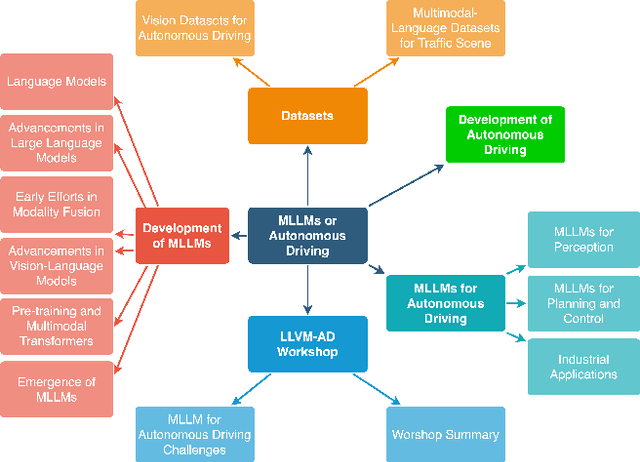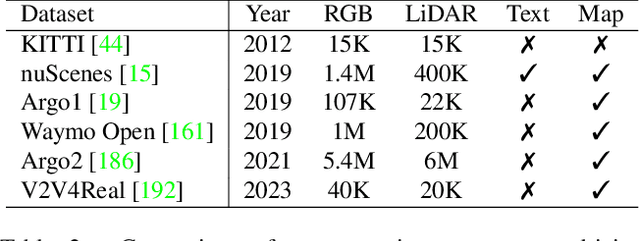Jianguo Cao
Medical Video Generation for Disease Progression Simulation
Nov 18, 2024Abstract:Modeling disease progression is crucial for improving the quality and efficacy of clinical diagnosis and prognosis, but it is often hindered by a lack of longitudinal medical image monitoring for individual patients. To address this challenge, we propose the first Medical Video Generation (MVG) framework that enables controlled manipulation of disease-related image and video features, allowing precise, realistic, and personalized simulations of disease progression. Our approach begins by leveraging large language models (LLMs) to recaption prompt for disease trajectory. Next, a controllable multi-round diffusion model simulates the disease progression state for each patient, creating realistic intermediate disease state sequence. Finally, a diffusion-based video transition generation model interpolates disease progression between these states. We validate our framework across three medical imaging domains: chest X-ray, fundus photography, and skin image. Our results demonstrate that MVG significantly outperforms baseline models in generating coherent and clinically plausible disease trajectories. Two user studies by veteran physicians, provide further validation and insights into the clinical utility of the generated sequences. MVG has the potential to assist healthcare providers in modeling disease trajectories, interpolating missing medical image data, and enhancing medical education through realistic, dynamic visualizations of disease progression.
What is the Visual Cognition Gap between Humans and Multimodal LLMs?
Jun 14, 2024Abstract:Recently, Multimodal Large Language Models (MLLMs) have shown great promise in language-guided perceptual tasks such as recognition, segmentation, and object detection. However, their effectiveness in addressing visual cognition problems that require high-level reasoning is not well-established. One such challenge is abstract visual reasoning (AVR) -- the cognitive ability to discern relationships among patterns in a set of images and extrapolate to predict subsequent patterns. This skill is crucial during the early neurodevelopmental stages of children. Inspired by the AVR tasks in Raven's Progressive Matrices (RPM) and Wechsler Intelligence Scale for Children (WISC), we propose a new dataset MaRs-VQA and a new benchmark VCog-Bench containing three datasets to evaluate the zero-shot AVR capability of MLLMs and compare their performance with existing human intelligent investigation. Our comparative experiments with different open-source and closed-source MLLMs on the VCog-Bench revealed a gap between MLLMs and human intelligence, highlighting the visual cognitive limitations of current MLLMs. We believe that the public release of VCog-Bench, consisting of MaRs-VQA, and the inference pipeline will drive progress toward the next generation of MLLMs with human-like visual cognition abilities.
A Survey on Multimodal Large Language Models for Autonomous Driving
Nov 21, 2023



Abstract:With the emergence of Large Language Models (LLMs) and Vision Foundation Models (VFMs), multimodal AI systems benefiting from large models have the potential to equally perceive the real world, make decisions, and control tools as humans. In recent months, LLMs have shown widespread attention in autonomous driving and map systems. Despite its immense potential, there is still a lack of a comprehensive understanding of key challenges, opportunities, and future endeavors to apply in LLM driving systems. In this paper, we present a systematic investigation in this field. We first introduce the background of Multimodal Large Language Models (MLLMs), the multimodal models development using LLMs, and the history of autonomous driving. Then, we overview existing MLLM tools for driving, transportation, and map systems together with existing datasets and benchmarks. Moreover, we summarized the works in The 1st WACV Workshop on Large Language and Vision Models for Autonomous Driving (LLVM-AD), which is the first workshop of its kind regarding LLMs in autonomous driving. To further promote the development of this field, we also discuss several important problems regarding using MLLMs in autonomous driving systems that need to be solved by both academia and industry.
ViTASD: Robust Vision Transformer Baselines for Autism Spectrum Disorder Facial Diagnosis
Oct 30, 2022Abstract:Autism spectrum disorder (ASD) is a lifelong neurodevelopmental disorder with very high prevalence around the world. Research progress in the field of ASD facial analysis in pediatric patients has been hindered due to a lack of well-established baselines. In this paper, we propose the use of the Vision Transformer (ViT) for the computational analysis of pediatric ASD. The presented model, known as ViTASD, distills knowledge from large facial expression datasets and offers model structure transferability. Specifically, ViTASD employs a vanilla ViT to extract features from patients' face images and adopts a lightweight decoder with a Gaussian Process layer to enhance the robustness for ASD analysis. Extensive experiments conducted on standard ASD facial analysis benchmarks show that our method outperforms all of the representative approaches in ASD facial analysis, while the ViTASD-L achieves a new state-of-the-art. Our code and pretrained models are available at https://github.com/IrohXu/ViTASD.
AggPose: Deep Aggregation Vision Transformer for Infant Pose Estimation
May 11, 2022



Abstract:Movement and pose assessment of newborns lets experienced pediatricians predict neurodevelopmental disorders, allowing early intervention for related diseases. However, most of the newest AI approaches for human pose estimation methods focus on adults, lacking publicly benchmark for infant pose estimation. In this paper, we fill this gap by proposing infant pose dataset and Deep Aggregation Vision Transformer for human pose estimation, which introduces a fast trained full transformer framework without using convolution operations to extract features in the early stages. It generalizes Transformer + MLP to high-resolution deep layer aggregation within feature maps, thus enabling information fusion between different vision levels. We pre-train AggPose on COCO pose dataset and apply it on our newly released large-scale infant pose estimation dataset. The results show that AggPose could effectively learn the multi-scale features among different resolutions and significantly improve the performance of infant pose estimation. We show that AggPose outperforms hybrid model HRFormer and TokenPose in the infant pose estimation dataset. Moreover, our AggPose outperforms HRFormer by 0.7% AP on COCO val pose estimation on average. Our code is available at github.com/SZAR-LAB/AggPose.
 Add to Chrome
Add to Chrome Add to Firefox
Add to Firefox Add to Edge
Add to Edge